Stratoglass: Geoforms
Material, when extracted from site, is never neutral. Sediment functions as both substance and signifier; its particulate makeup shaped by geological time, ecological process, and cultural use. Within an architectural context, it transforms into a spatial index: locating the building within a lineage of landscape, extraction, and embedded memory. Matter becomes narrative; form becomes archive.
Task
To develop a sediment-infused resin composite that functions as both structural element and spatial register, capturing geological layering, material tactility, and environmental response.
-
Strategy
Site Casting
-
Design
Sediment Morphology
-
Client
Internal R+D
Stabilising + Sustaining Ephemera
How might we architect a matrix that preserves the stratified poetics of loose geological matter its particulate texture, spatial memory, and temporal flux without fossilising its impermanence?
This inquiry resists permanence as default, favouring a design ethos where fragility is formalised, and transience becomes tectonic.
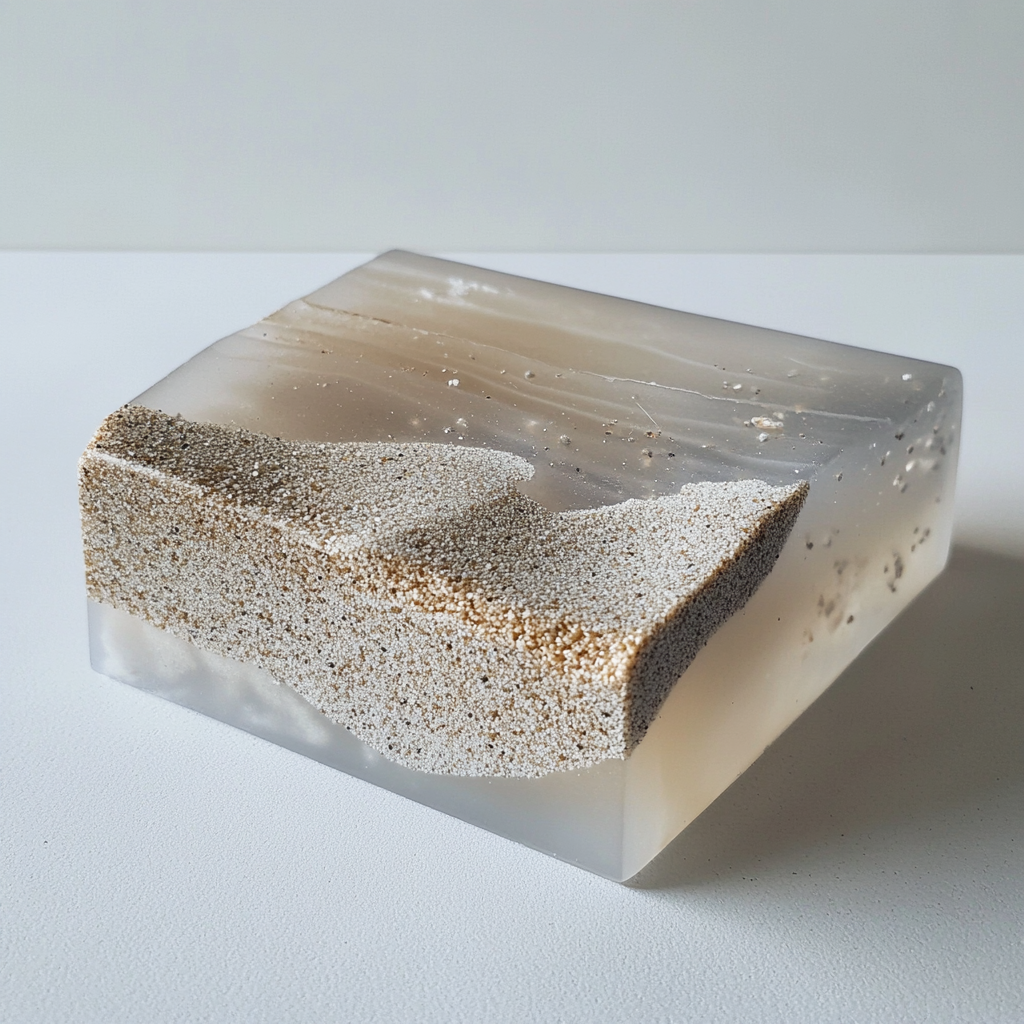
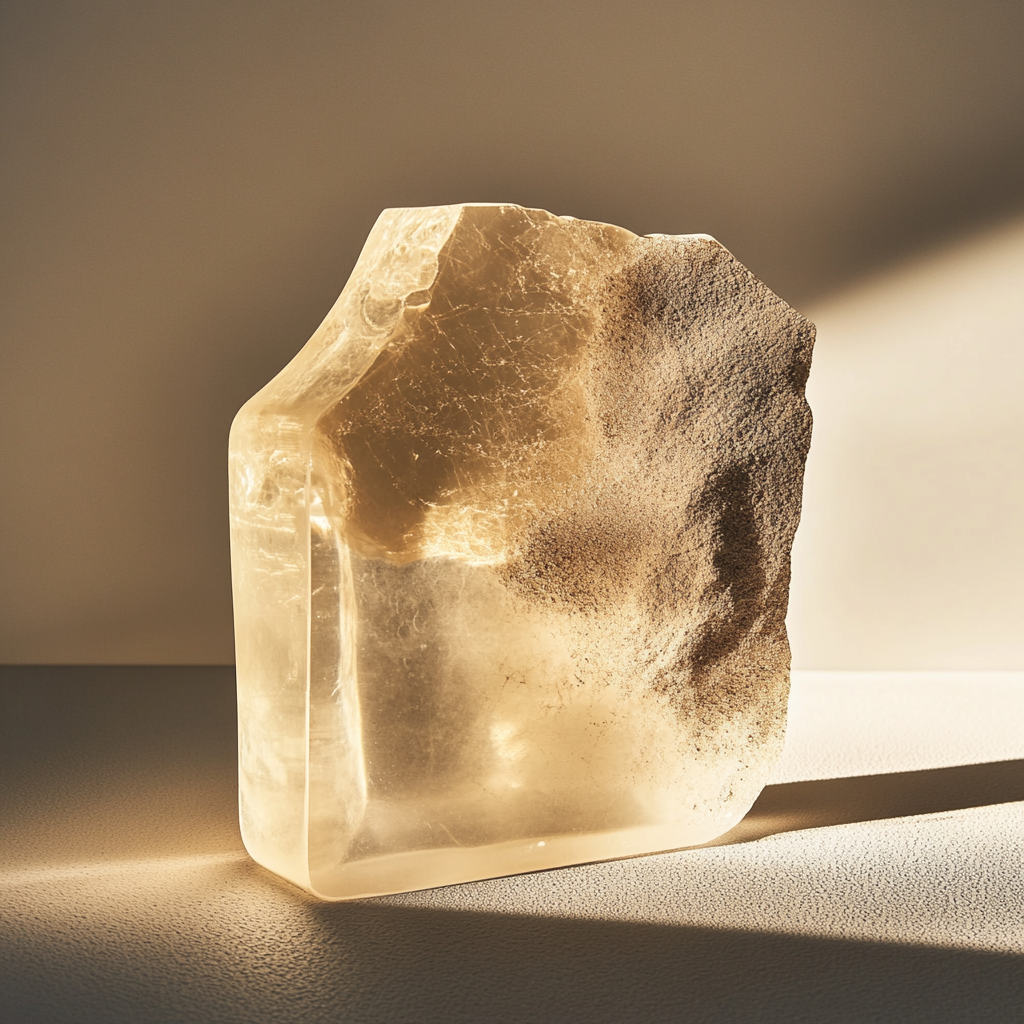
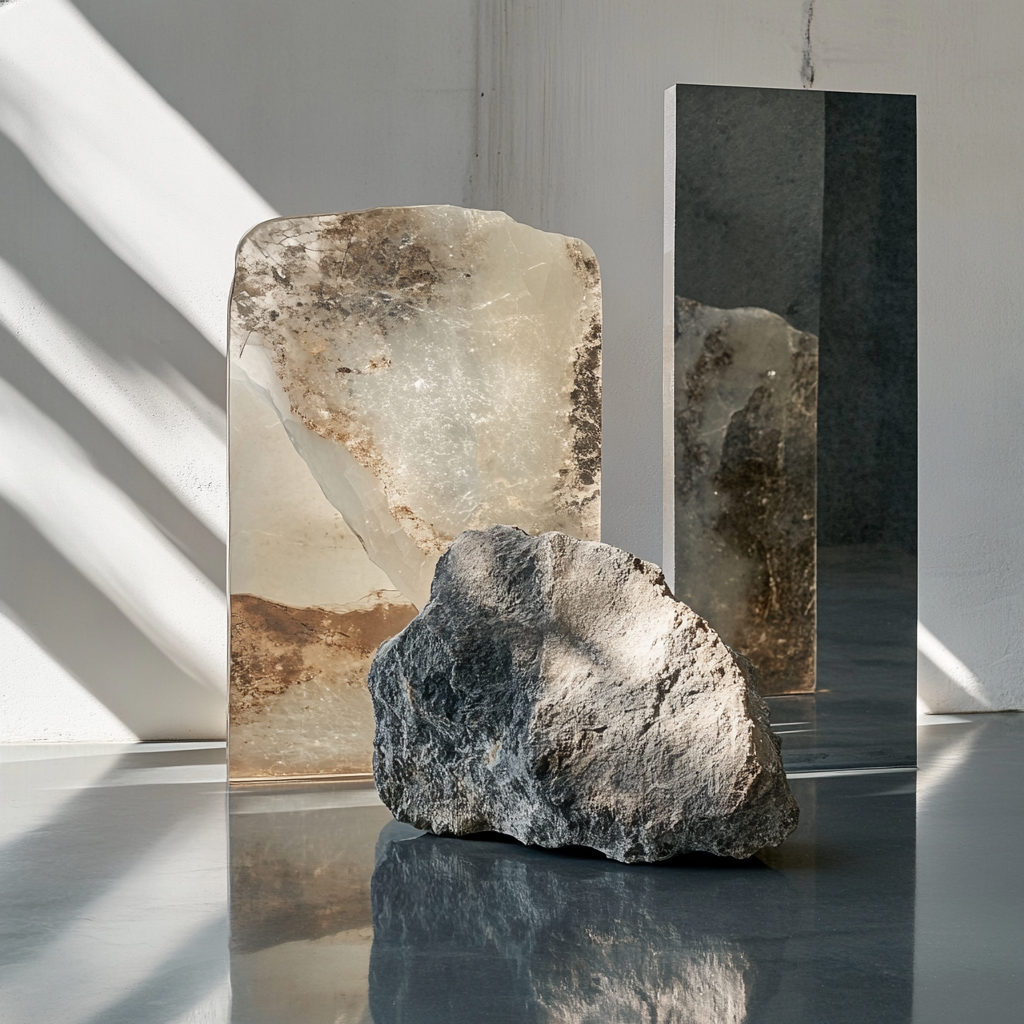
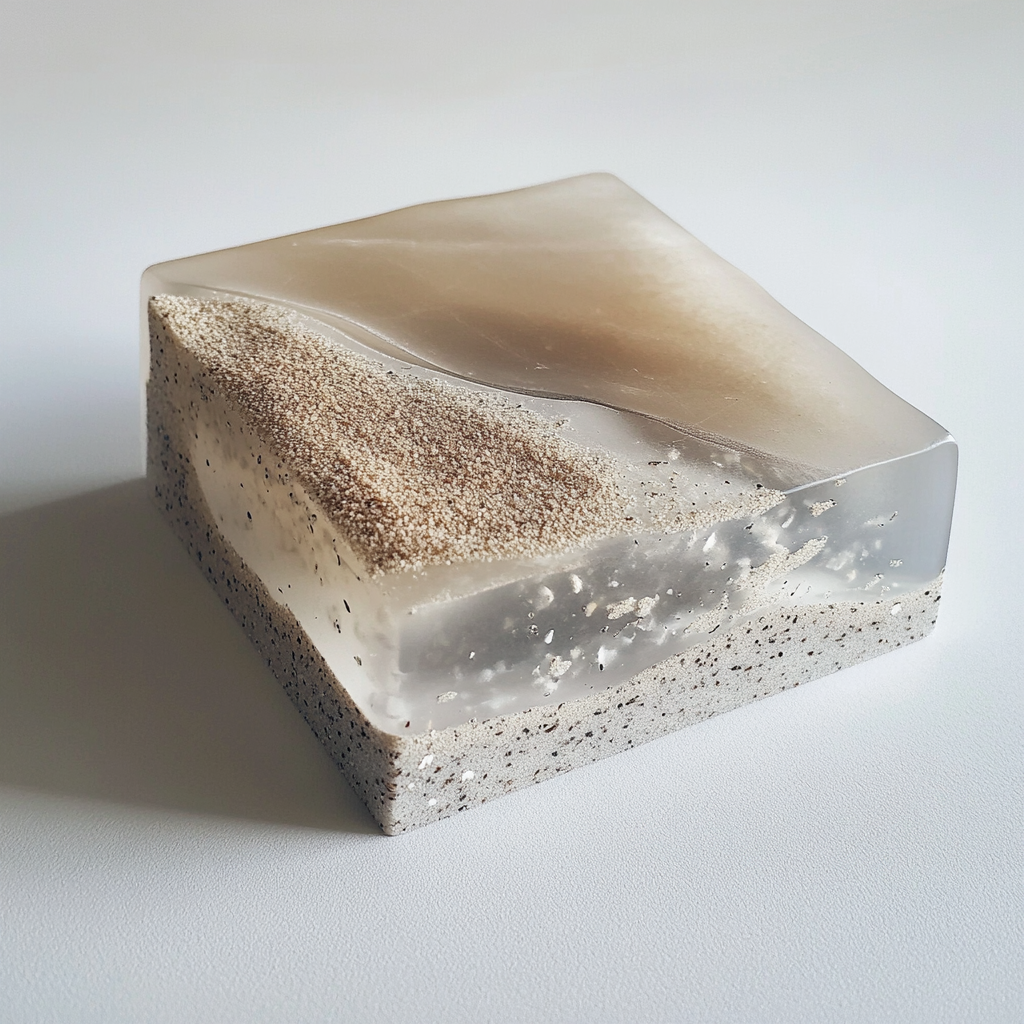
Encoding the Ephemeral
How can we stabilize loose sediment within a durable matrix while preserving its granular texture, layering legibility, and ecological specificity without erasing the impermanence it represents?
Layering Memory, Casting Place
This study explores the stratification of site-specific sediments within resin matrices to create a composite material that functions as both structural surface and environmental archive.
Through iterative casting and material tuning, the project investigates how geological residues can be transformed into tactile, performative components that index time, terrain, and transformation.
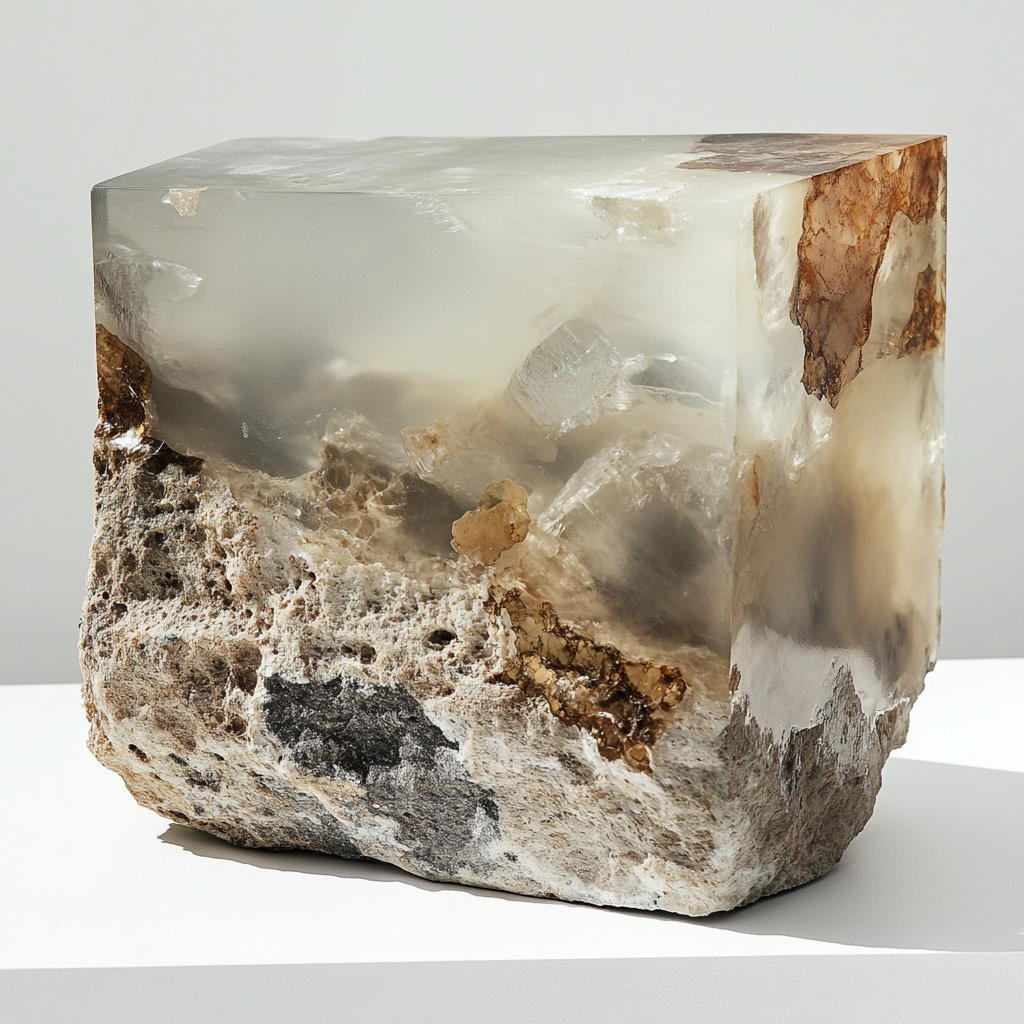
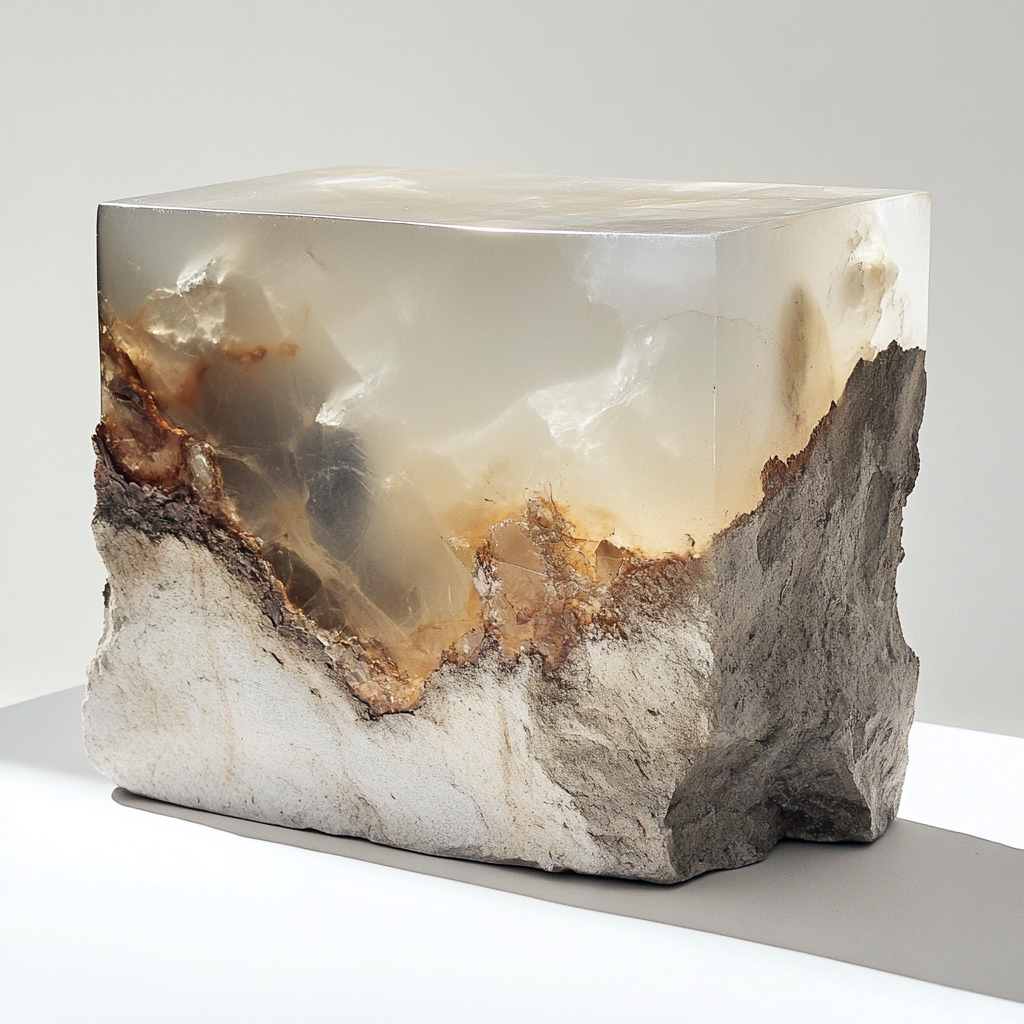
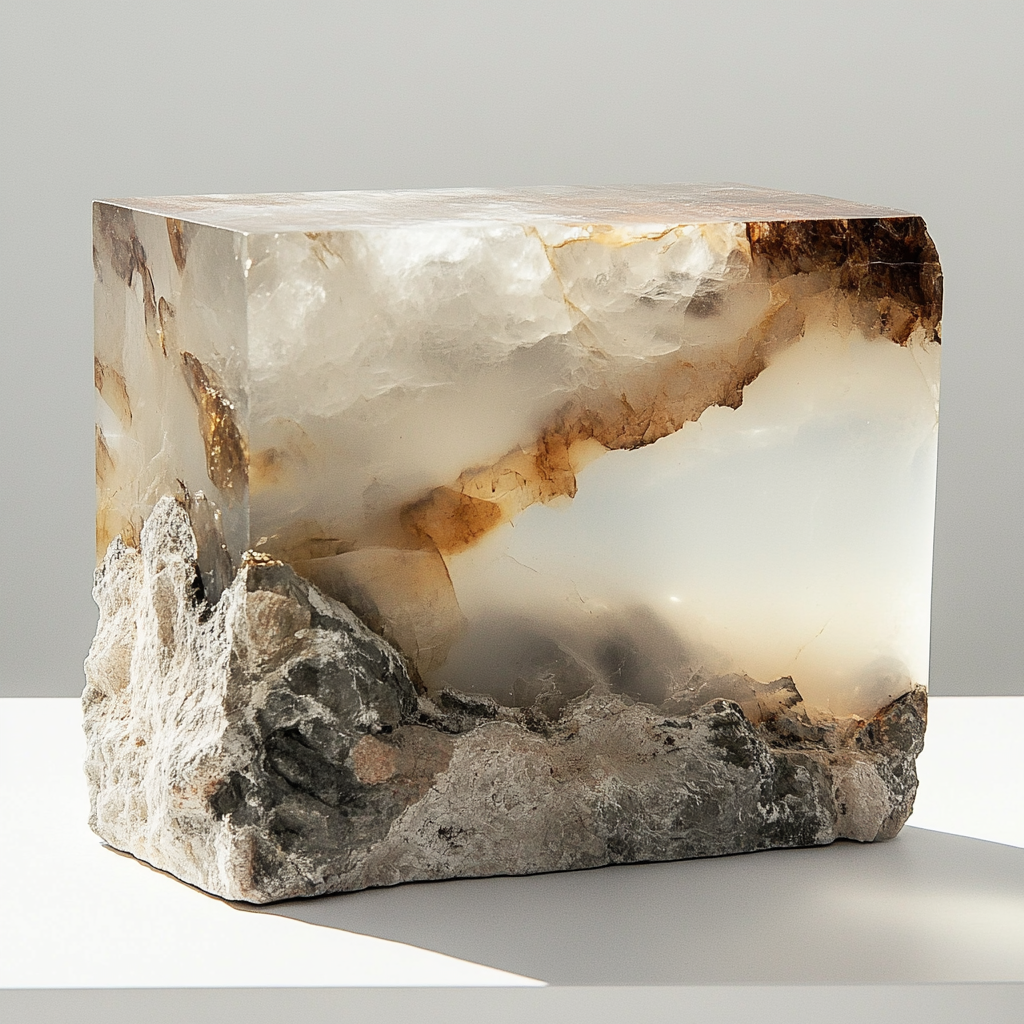
Stratoglass: Sediment-Infused Resin Block as Index of Time, Territory, and Transformation
Stratoglass embodies a mixed-composition logic: inert mineral meets reactive polymer, grit meets gloss. This juxtaposition of earth-bound material with petroleum- or algae-based binder initiates a critical dialogue what does it mean to fossilise sediment with resin, to trap natural entropy within synthetic time?
Alternative hybridisations could include swapping petro-based epoxy with sugarcane resin, or replacing sand with shell aggregate or urban demolition powder. The future of Stratoglass lies in its mutability each block can be a customised strata of reuse and reinvention.
Stratoglass emerges from the confluence of mineral logic and synthetic clarity a sediment-infused resin block whose geological imprint is embedded in its composition. The granular upper strata comprise sand aggregates, pumice particulates, and fine biochar materials often derived from volcanic terrains, coastal deltas, and regenerative agricultural by-products.
The translucent matrix below, a cast resin (potentially bio-derived from pine, chitosan, or algae), functions as a temporal archive, suspending sedimentary narratives within a fossilised optical medium.
The block was formed through recursive calibration: a feedback-rich cycle of sediment pouring, controlled casting, and thermal curing. The layering process was informed by digital simulations of particulate distribution under gravity, followed by physical trials in vacuum-sealed moulds to minimise air-pocket retention.
Empirical adjustment played a critical role early iterations suffered from sediment slippage and resin bubbling, prompting changes in pour viscosity, catalyst ratio, and curing rhythm. Casting became both a structural experiment and an aesthetic choreography, aligning process with performative outcome.
Fabrication Techniques and Assembly
Production relies on silicone-based flexible moulds, allowing for bespoke cavity forms and reconfigurable layering. Robotic armatures were used to simulate particle flow in digital environments, informing the physical pour sequence.
Variation defines the form casting becomes an index of momentary turbulence. Assembly may follow a modular logic, interlocking via dovetail or vacuum joints, or be encased within CNC-milled timber or metal chassis. Here, the mould becomes more than a tool it acts as a formal negotiator between randomness and control.
Though not inherently climate-reactive in its current form, Stratoglass has latent ecological potential. The sediment layer could act as a passive humidity buffer, while the resin body might incorporate phase-change additives to store thermal energy. Future iterations may integrate porous ceramics or embed algae biocomposites within the resin opening possibilities for carbon capture, air filtration, or photosynthetic engagement.
Preliminary testing indicates medium compressive strength with low tensile performance typical of resin-cast composites. Thermal behavior is bifurcated: the sediment zone offers modest insulation due to micro-air entrapment, while the resin body exhibits low thermal inertia, making it suitable for indoor or controlled-climate applications.
Acoustically, the block absorbs low-range frequencies through its granular topography, though its dense base reflects higher frequencies a dual behaviour suitable for soundscape modulation in hybrid interior contexts. Testing methodologies include compression tests via hydraulic press, heat-mapping under IR thermography, and porosity measurements using mercury intrusion porosimetry.
Cultural and Societal Dimensions
Stratoglass is not mass-produced it invites site specificity and manual authorship. Builders can pour sediment from their own region, encoding locality into every pour.
This repositions the maker as more than fabricator they become geographer, chemist, and archivist. Its use could challenge the dominance of mass-homogenised construction. Imagine civic monuments, community spaces, or altars made from Stratoglass each revealing the ground beneath our feet, not as waste, but as material narrative.
Over time, surface micro-cracks, yellowing of resin, and sediment migration may occur rendering each block temporally alive. Rather than resisting change, the prototype embraces it, turning weathering into a secondary design phase.
When touched, it offers a duality: warm and cool, rough and smooth. Held under light, it glows from within. It emits no odour, but its grain evokes the scent of earth, char, and salt silent reminders of its geologic origin.
Visually, Stratoglass behaves like solidified atmosphere its topographic shifts read as frozen dunes, while its translucent matrix refracts light like glacial melt. The aesthetic oscillates between erosion and precision: a tension between geological softness and synthetic rigidity.
Tactilely, the upper zone presents a grain-rich roughness, transitioning to a gloss-smooth base inviting both visual contemplation and haptic engagement. It resists conventional tectonic reading; here, structure and ornament collapse into one. The casting of voids and gradients becomes not just a formal language but a form of atmospheric inscription.
Could Stratoglass evolve into a structural glazing substitute, or thermal mass panel for interiors? Might it embed responsive fibres, light channels, or living matter?Could it serve as a medium for storytelling each block etched with soil from a local crisis, celebration, or protest?
As automation scales up, some gestures must remain handmade: the pour, the sediment mix, the gradient of transparency. These become acts of resistance against erasure, against blandness, and for the continued relevance of craft, geology, and time as architectural collaborators.